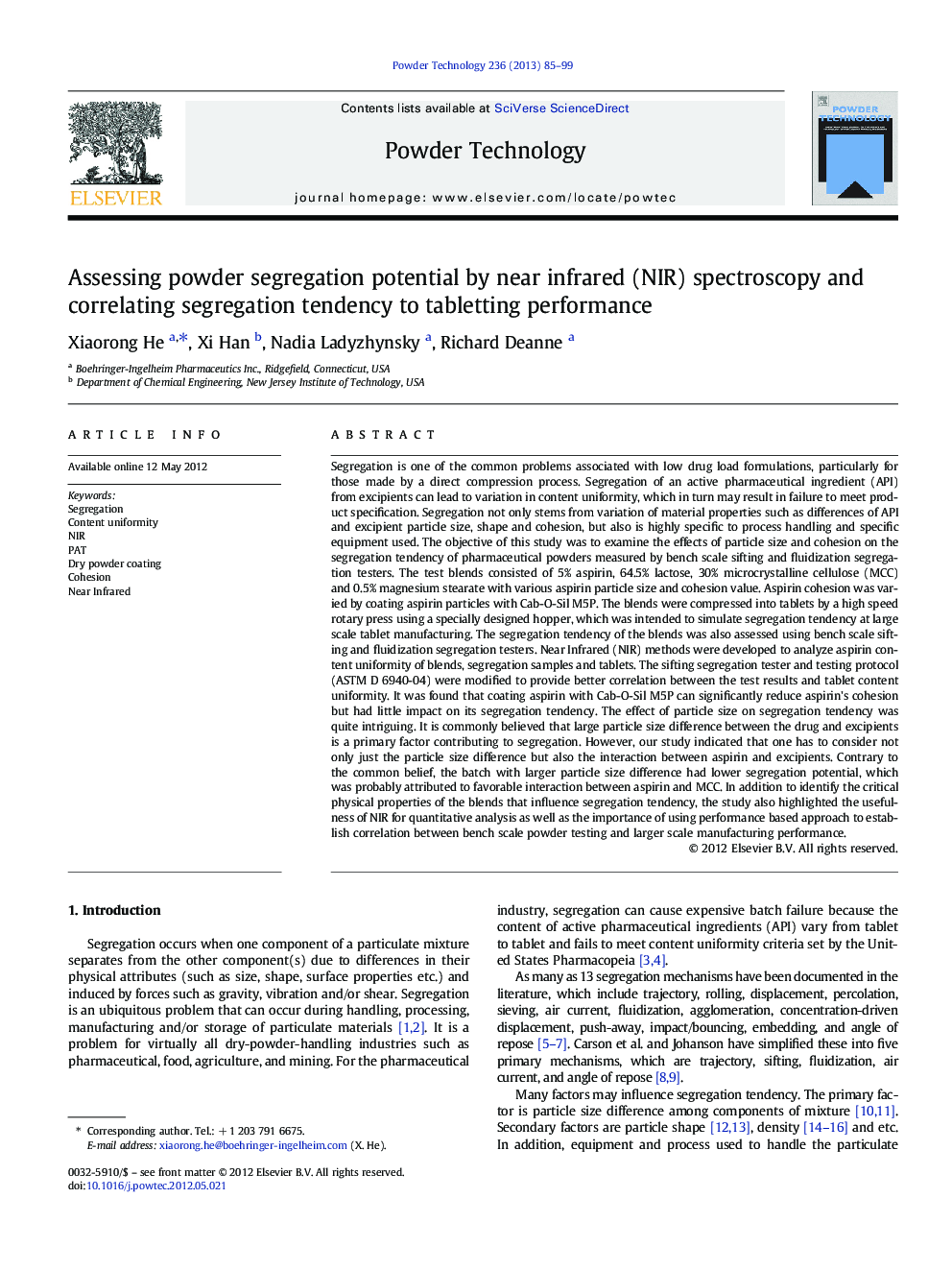| کد مقاله | کد نشریه | سال انتشار | مقاله انگلیسی | نسخه تمام متن |
|---|---|---|---|---|
| 236591 | 465681 | 2013 | 15 صفحه PDF | دانلود رایگان |

Segregation is one of the common problems associated with low drug load formulations, particularly for those made by a direct compression process. Segregation of an active pharmaceutical ingredient (API) from excipients can lead to variation in content uniformity, which in turn may result in failure to meet product specification. Segregation not only stems from variation of material properties such as differences of API and excipient particle size, shape and cohesion, but also is highly specific to process handling and specific equipment used. The objective of this study was to examine the effects of particle size and cohesion on the segregation tendency of pharmaceutical powders measured by bench scale sifting and fluidization segregation testers. The test blends consisted of 5% aspirin, 64.5% lactose, 30% microcrystalline cellulose (MCC) and 0.5% magnesium stearate with various aspirin particle size and cohesion value. Aspirin cohesion was varied by coating aspirin particles with Cab-O-Sil M5P. The blends were compressed into tablets by a high speed rotary press using a specially designed hopper, which was intended to simulate segregation tendency at large scale tablet manufacturing. The segregation tendency of the blends was also assessed using bench scale sifting and fluidization segregation testers. Near Infrared (NIR) methods were developed to analyze aspirin content uniformity of blends, segregation samples and tablets. The sifting segregation tester and testing protocol (ASTM D 6940-04) were modified to provide better correlation between the test results and tablet content uniformity. It was found that coating aspirin with Cab-O-Sil M5P can significantly reduce aspirin's cohesion but had little impact on its segregation tendency. The effect of particle size on segregation tendency was quite intriguing. It is commonly believed that large particle size difference between the drug and excipients is a primary factor contributing to segregation. However, our study indicated that one has to consider not only just the particle size difference but also the interaction between aspirin and excipients. Contrary to the common belief, the batch with larger particle size difference had lower segregation potential, which was probably attributed to favorable interaction between aspirin and MCC. In addition to identify the critical physical properties of the blends that influence segregation tendency, the study also highlighted the usefulness of NIR for quantitative analysis as well as the importance of using performance based approach to establish correlation between bench scale powder testing and larger scale manufacturing performance.
This graphic abstract depicts key methodologies used in this paper. The aspirin content uniformity was analyzed using the Near Infrared (as shown by the NIR instrument and NIR spectrum). Powder’s segregation tendency was tested with segregation testers (the modified sifting segregation tester is shown), and then correlated to tablet content uniformity (the tablet press with extended hopper and tablet CU over time were shown).Figure optionsDownload as PowerPoint slide
Journal: Powder Technology - Volume 236, February 2013, Pages 85–99